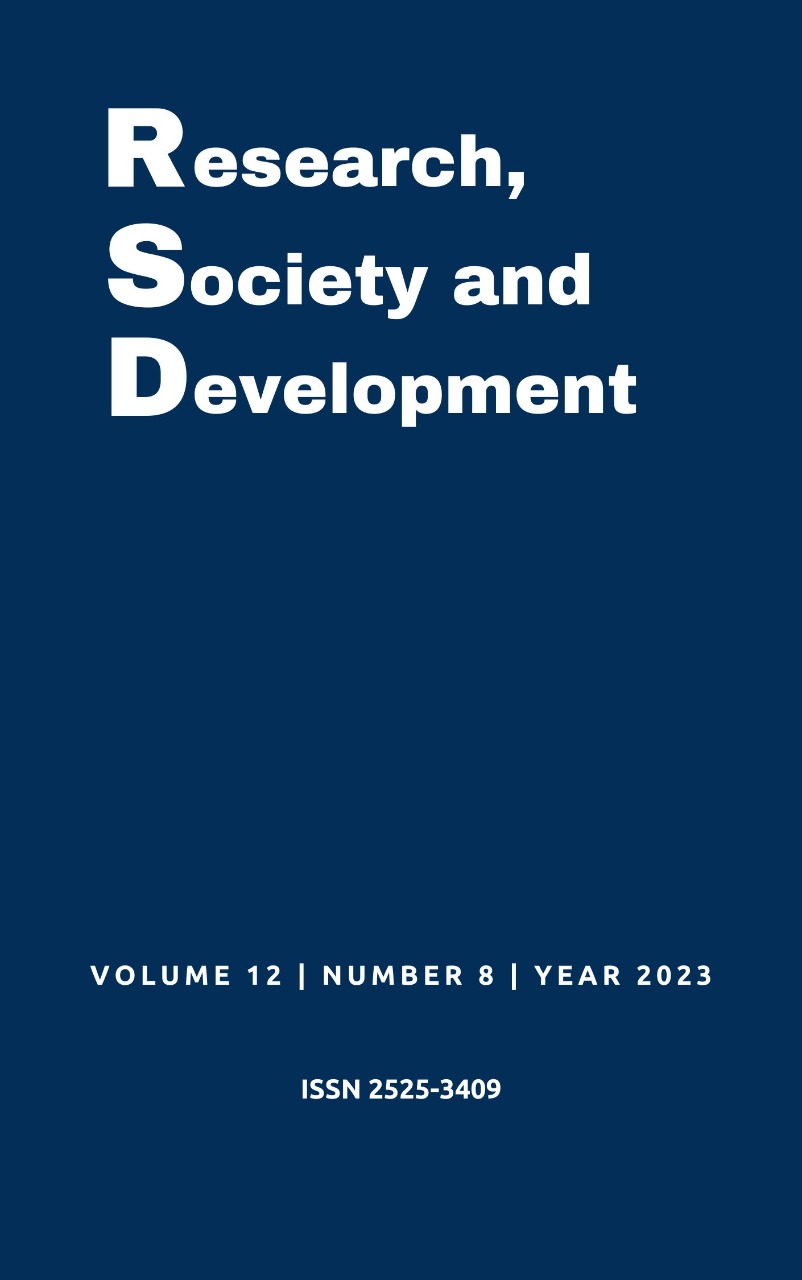Community Participation in the Decision-Making Process for Environmental Sanitation, Case Study: 3 de Fevereiro Neighborhood in the Municipality of Quelimane
DOI:
https://doi.org/10.33448/rsd-v12i8.42705Keywords:
Community, Participation, Sanitation, Decision, Public health.Abstract
The present research aims to analyze community participation in the decision-making process for environmental sanitation and its impact on public health in the Municipality of Quelimane, with a focus on the 3 de Fevereiro Neighborhood. Sanitation is essential to ensure a healthy environment and improve the quality of life in society. To conduct this study, methods such as literature review, interviews, and questionnaires were used. The results were obtained through participant responses, data analysis, and organization in an Excel database. The selected sample consisted of 45 individuals, including men and women between the ages of 28 and 60, residing in 10 blocks of the neighborhood. Community participation can bring about various positive outcomes and impacts, such as improved waste management, promotion of sustainable sanitation practices, increased access to sanitation services, and awareness of the importance of hygiene and environmental sanitation. However, for better results, community involvement is crucial in all approaches and strategies at all levels. Community participation can bring significant benefits to waste management and the promotion of sustainable sanitation practices, thus enhancing the quality of life for the population.
References
Andrade, F. M. A. D. B. (2022). Construindo a cidadania: estudo da participação e controle social na gestão do saneamento básico no município de Ouro Preto-MG. http://www.repositorio.ufop.br/jspui/handle/123456789/15413.
Araújo, M. (2020). Ruralidades-urbanidades em Moçambique: conceitos ou preconceitos. Geografia: Revista da Faculdade de Letras da Universidade do Porto, 18. http://ler.letras.up.pt/uploads/ficheiros/293.pdf.
Bain, R., Cronk, R., Wright, J., Yang, H., Slaymaker, T., & Bartram, J. (2014). Fecal contamination of drinking-water in low- and middle-income countries: A systematic review and meta-analysis. Environmental Health Perspectives, 122(12), 1272-1280. 10.1289/ehp.1307044.
Barreto, M. (2014). Saneamento básico no Brasil: Desafios e perspectivas. Fiocruz.
Barreto, M. L. (2008). Saneamento básico: um desafio para a saúde pública. Ciência e Saúde Coletiva, 13(Suppl 1), 43-46. 10.1590/S1413-81232008000700007.
Capanema, L. X. D. L. (2022). Implementação do novo marco legal do saneamento: a importância da regulação por contrato em um cenário atual de transição regulatória. https://web. bndes. gov. br/bib/jspui/handle/1408/22564.
Cicogna, M. P. V., Junior, R. T., Gremaud, A. P., & de Brites Figueiredo, A. G. (2022). Financiamento do saneamento: linhas de crédito e perfil do endividamento das sociedades anônimas no Brasil. Revista Tempo do Mundo, (29), 295-334. Brasil.
Faria, M. T. D. S., Pereira, L. M. S., Dias, A. P., Gomes, U. A. F., & Moura, P. (2022). Panorama dos Planos Municipais de Saneamento Básico e Planos Diretores de Drenagem Urbana em municípios de pequeno porte de Minas Gerais. Engenharia Sanitaria e Ambiental, 27, 185-193. https://doi.org/10.1590/S1413-415220200357.
Fonseca, C., Sanches Fernandes, L. F., & Bentes, I. (2020). Community participation in the decision-making process for the provision of basic sanitation services in rural areas of Mozambique. In IOP Conference Series: Earth and Environmental Science (Vol. 522, No. 1, p. 012127). IOP Publishing. 10.1088/1755-1315/522/1/012127.
Gujral, L.M; (2009) Manual de prevenção e tratamento da cólera e de outras diarreias agudas; (3a ed.) Maputo
Gil, A. C. (1999). Como elaborar projectos de pesquisa (4a ed.) Atlas.
Kar, K. & Chambers, R. (2008). Handbook on Community-Led Total Sanitation’, Institute of Development Studies and Plan International, UK.
Kayaga, S., Scheelbeek, P., Marks, S., & Paton, S. (2014). Fecal contamination of drinking water in low- and middle-income countries: A systematic review and meta-analysis. PLoS Medicine, 11(5), e1001644. 10.1371/journal.pmed.1001644.
Maloa, J. M. (2016). A urbanização moçambicana: uma proposta de interpretação. (Tese de Doutoramento, Universidade de São Paulo). https://www.teses.usp.br/teses/disponiveis/8/8136/tde-05082016-155420/pt-br.php.
Maxlhaieie, P., e Ribeiro, A. (2021). Metodologia de apoio a decisão aplicada à quantificação de problemas urbanos na cidade de Inhambane, Moçambique. Revista Da UI_IPSantarém, 9 (3), 49–64. https://doi.org/10.25746/ruiips.v9.i3.26202.
Oduro-Kwarteng, S., Awuah-Offei, K., Agodzo, S. K., & Abbey, M. E. (2018). Community participation in solid waste management: The case of Nima, Accra, Ghana. Cogent Social Sciences, 4(1), 1-15. 10.1080/23311886.2018.1523141.
Okuwa, M., Pedi, D., Mafico, V., & Rwodzi, L. (2019). Community engagement in water and sanitation development projects in rural Zimbabwe. Physics and Chemistry of the Earth, Parts A/B/C, 111, 430-436. 10.1016/j.pce.2018.10.028.
ONU (2010). Assembly, U. G. The human right to water and sanitation: resolution/adopted by the General Assembly, 3 August 2010. A/RES/64/292, http://www. refworld. org/docid/4cc926b02. html.
Programa Nacional de Água – PNA (2018). Maputo.
Ribeiro, J. W. & Rooke, J. M. S. (2010). Saneamento básico e sua relação com o meio ambiente e a saúde pública. Juiz de Fora, MG, 13.https://scholar.google.com.br.
Rifkin, S. B. (2014). Examining the links between community participation and health outcomes: A review of the literature. Health Policy and Planning, 29(suppl_2), ii98-ii106. 10.1093/heapol/czt072.
Tadesse, G., & Hoekstra, A. Y. (2015). The water footprint of domestic and productive water uses in the Lake Naivasha basin, Kenya: Implications for water management. Ecological Indicators, 52, 394-402.
World Health Organization. (2008). Safer water, better health: Costs, benefits and sustainability of interventions to protect and promote health. Geneva: World Health Organization.
Downloads
Published
Issue
Section
License
Copyright (c) 2023 Felizardo Bernardo Camões

This work is licensed under a Creative Commons Attribution 4.0 International License.
Authors who publish with this journal agree to the following terms:
1) Authors retain copyright and grant the journal right of first publication with the work simultaneously licensed under a Creative Commons Attribution License that allows others to share the work with an acknowledgement of the work's authorship and initial publication in this journal.
2) Authors are able to enter into separate, additional contractual arrangements for the non-exclusive distribution of the journal's published version of the work (e.g., post it to an institutional repository or publish it in a book), with an acknowledgement of its initial publication in this journal.
3) Authors are permitted and encouraged to post their work online (e.g., in institutional repositories or on their website) prior to and during the submission process, as it can lead to productive exchanges, as well as earlier and greater citation of published work.


